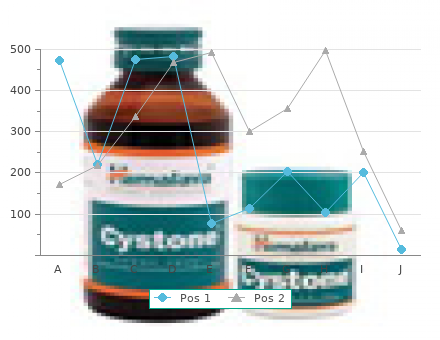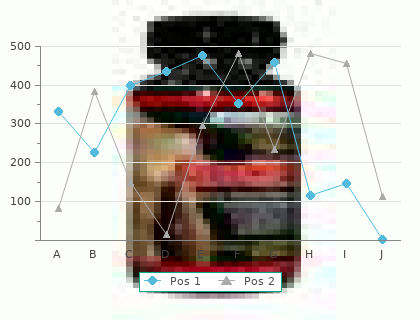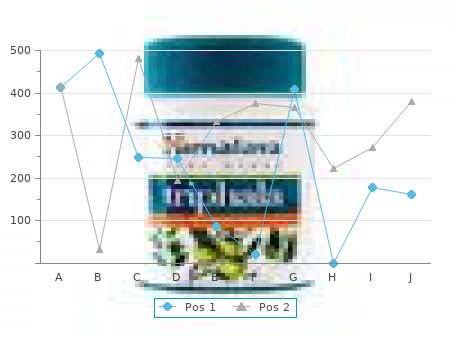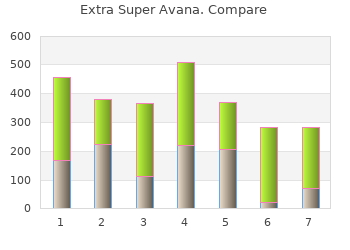Extra Super Avana
By N. Topork. Montana Tech.
The causes of lesser flamingo mortality events appear to be multifactorial and not due to one specific disease purchase extra super avana 260 mg without prescription. The thinking of the wetland manager must not be constrained by the limited number of disease factsheets presented herein (Ruth Cromie). For a wetland manager faced with a disease problem in need of a rapid diagnosis, expert animal disease expertise should be sought from local or national authorities. This section merely provides some guidance to the key questions to help the wetland manager to begin to ‘eliminate’ some disease possibilities and to assist the dialogue with disease professionals conducting an epidemiological investigation. Further relevant concepts regarding epidemiological information are provided in ►Section 3. Many abiotic diseases, such as anthropogenic toxic diseases, may have a broad geographical range. Conversely, most biotic diseases have a defined geographical range determined by the range of the pathogen, host or vector. The nature of trade (legal and illegal) and other anthropogenic movements can allow the introduction of disease into new areas and so this should be borne in mind – novel disease is a possibility. The character of the wetland greatly affects the nature, prevalence and incidence of associated diseases. As an example, deep lakes or fast flowing rivers are much less likely to be sources of schistosomiais or Rift Valley fever as the vectors of these diseases (freshwater snails and mosquitoes, respectively) will be less abundant. A wetland manager should familiarise themselves with the diseases associated with the type of wetland for which they are responsible. The species affected by a particular disease are a key part of an epidemiological investigation and will help guide a wetland manager and animal health professional into considering possibilities of a cause. As an example, within a biodiverse wetland, an outbreak of avian botulism may kill many waterbirds and leave other taxa unaffected, whereas, a harmful algal bloom may affect almost all animal taxa present. A wetland manager should become familiar with how seasons trigger health events within a particular wetland. A wetland manager should be familiar with how diseases are transmitted, which then allows a better ability to assess risk and potential cause of disease. A strong likelihood of water-borne pathogens associated with faecal contamination having entered waterways provides a pointer for a wetland manager to start contemplating the range of associated diseases that might be at play, e. As another example, a relative absence of invertebrate vectors such as mosquitoes may make an outbreak of Rift Valley fever unlikely. A wetland manager should know what represents ‘normal’ behaviour and ecology in livestock and wildlife in the wetlands they manage. Deviations from this normal state, whether behavioural or otherwise, may then provide a good indication of the disease processes at play. Determining the potential impacts of a disease will be impossible without a diagnosis from animal health experts, however, the wetland manager will be able to contribute to the impact assessment given their knowledge of human, livestock and wildlife activities within a wetland site. Wetland characteristic and geographical range: a mesotrophic lake in Iceland and a eutrophic lake in Nepal, choked with invasive alien water cabbage Pistia spp. Regardless of susceptible hosts present in these wetlands, the geochemical, hydrological, climatological and biological attributes of these wetlands ensure a different diversity of potential diseases and invertebrate vectors (Ruth Cromie, Sally Mackenzie). The factsheets are designed for wetland managers focusing on the aspects most relevant to disease management in wetlands, such as prevention and control measures. The factsheets are not intended as diagnostic guides, but as primers describing the disease, listing available management strategies, and directing the reader to sources where further technical guidance can be obtained. Factsheet sections The factsheets are divided into eight sections: Header At-a-glance summary of taxa affected, relevant wetland type and levels of impact. Key facts Brief description of the disease, the causal agent, the species affected, the geographic distribution and the environment in which the disease usually occurs. Transmission and spread How the disease is transmitted and spread, including (when relevant) vectors*, transmission between individuals, spread between geographic areas and how/if the disease is transmitted to humans. Identification and response Identifying and responding to a disease problem, including field signs, recommended action if the disease is suspected and information about how a diagnosis may be made. Prevention and control in Prevention and control measures in the environment, livestock, wetlands wildlife and humans. Importance Global importance in terms of effects on wildlife, livestock and humans, and economic importance. For the sake of these practically-focussed factsheets they refer to various means by which infection can be transferred. Factsheet header explained The factsheet header contains a quick summary of the disease, including the most widely known names of the disease, symbols to indicate which taxa are affected, a brief description of the wetland types in which the disease might be found, and three boxes indicating whether or not the disease can occur in wildlife, livestock and humans, plus the level of impact the disease has on each of these groups. Wildlife Wetlands inhabited by the Livestock tsetse fly Human How the disease affects livestock e. The taxa categories are invertebrates, fish, amphibians & reptiles, birds and mammals. The taxa symbols appear in the factsheet headers in two colours: black indicates the taxa that are usually affected, and grey indicates the taxa that can also be affected (see example above).

More than 90 percent of them are online purchase 260 mg extra super avana visa, a markedly higher percentage than among the broad consumer population, although only 56 percent can access the Internet from their offices. Physicians 71 Physicians have become moderately sophisticated users of modern network computing. Because every dollar of practice expense is viewed as income forgone, physi- cians (even in large group practices) typically starve their businesses for capital, of which computer technology is part. Over time, physi- cians evolved manual clinical and financial systems that work for them, but at a price: increasingly costly clerical support to man- age the flow of patient information, scheduling, and, particularly, billing and interaction with health insurers. Replacing these manual systems with computerized systems, furthermore, is time consuming and painful. For group practice managers, one sure way to get fired is to bungle the installation of a computer system and impede the flow of funds to physicians. All too often, business software for medicine has been riddled with bugs and is difficult to connect to other programs or systems on which the software depends. Physicians have a high functional “hurdle” that information systems must surmount for them to be readily accepted and used. Specifically, they must make practicing medicine demonstrably eas- ier and more financially rewarding. According to a recent Harris Interactive study, only 17 percent of primary care physicians and 12 percent of specialists in the United States reported using electronic medical records in 2000. On the primary care side, this compares to 52 percent in New Zealand and 59 percent in the United Kingdom. On the specialty side, utilization is lower: 14 percent of New Zealand specialists and 22 percent of specialists in the United Kingdom (many of whom are salaried employees of Britain’s National Health Service) report using electronic medical records. In New Zealand, by contrast, 52 percent of primary care physicians and 14 percent of specialists reported prescribing drugs electronically. In Britain, 87 percent of primary care physicians and 16 percent of specialists reported electronic prescribing. It will markedly ease the difficulties in communication not only between doctors and patients, but also among physicians. A major barrier to adoption of modern business software for physician practices was that it required physicians to make a signifi- cant capital expenditure. Incurring debt of any kind often required physicians to guarantee the debt personally, heaping business debt on top of large mortgages, automobile leases, medical school loans, 74 Digital Medicine and who knows what else. Principally for this reason, only 17 percent of physicians’ office medical records are electronic, as of this writing. Most physicians were locked out of electronic commerce in med- icine because of the small scale of their computing needs and the high cost of the dedicated T1 telephone connection (which could range from $1,000 to $5,000 a month). The firms that physicians can connect to can not only process their medical claims for them but can also support electronic patient records and patient e-mail access to their physicians. All the office-based physician needs is a modestly powered desk- top computer, training for the office staff, and the patience to re- configure his or her current billing and record-keeping systems. Physicians 75 Physicians can now purchase computer support for their practices that once only large group practices and hospitals could afford. Eventually, this office-based software will be connected electron- ically to the health plans, which will accept, evaluate, and pay physi- cian claims electronically, without the physician’s office needing to generate paper bills. Reducing the need to handle paper medical claims will also markedly reduce the administrative costs of health plans. The patients’ portion of the bill will be predetermined, based on their unique health insurance coverage (which is part of each pa- tient’s computer file). The patients’ share will then be billed to their credit card at the time of service, reducing both accounts receivable and the physician’s office clerical costs. Again, although it may take up to a decade, eventually most physicians’ offices will free themselves from paper records and billing systems. When they make the conversion from paper record and bills to digital systems, physicians will be able to reduce their clerical employment by as much as one-half and rededicate their nursing personnel to clinical, rather than office, tasks. Consumers will experience all of this as much easier and more hassle-free service from their physicians’ office. They will not be asked to re-register every time they see their physicians because their computer file will “remember” all the pertinent insurance in- formation from the last visit. Rather, consumers will be able to make appointments and register for their visits from home via their web browser. Although physicians have taken to the Internet in large numbers in their personal lives, they have been thus far profoundly reluc- 76 Digital Medicine tant to incorporate Internet applications into their practices. While physicians are beginning to use e-mail to network with professional colleagues, estimates as of December 2002 suggest only 23 percent use e-mail to communicate with their patients. Only 16 per- cent of physicians who see patients 65 or more hours a week reported that they use e-mail and online consultations. According to a CyberDialog survey in 1999, 48 percent of patients want e-mail links to their doctors. What they may not consider is that the same lack of payment applies to the time consuming and frus- trating game of telephone tag physicians presently play with their patients.

The greater diabetes prevalence in females is often due to the more sedentary lifestyle that women lead buy extra super avana 260mg with visa, causing obesity which is more prevalent among Pacific women than men (Ng et al. Unfortunately, diabetes is further known to precede the onset of heart disease and stroke (Hu, 2013). In the case of Papua New Guinea, the male smoking prevalence is more than double that of females (Eriksen, Mackay, Schluger, Gomeshtapeh, & Drope, 2015). The smoking prevalence of boys and girls in more than half of the world indicates no significant difference across the genders (Warren et al. Future health policies should begin to address the closing gender gap in smoking and identify ways to educate the female population particularly because they are more adversely affected by tobacco use. Designated caregivers often must interrupt their education or withdraw from the workforce which in turn impacts their security and health (Brands & Yach, 2002). Because females are more likely to assume the caregiving position, the aforementioned relationship is more burdensome for females than males. The correlation between the poor – often women and children – and ill health requires more gender-specific health policies (Brands & Yach, 2002). Growing sea levels and extreme weather events also damage agricultural systems and increase instances of malnutrition. Studies have shown that during heat waves, developing countries have reported increased mortality (Hajat, Armstrong, Gouveia, & Wilkinson, 2005). This increase is mainly due to an “overloading” of the cardiovascular and respiratory systems, and is more common among individuals who already suffer disease or weakness of these systems (Parsons, 2003). Heat waves are also known to increase hospital admissions, and consistently hot, arid climates can increase dehydration amongst the population resulting in the occurrence of kidney stones (Cramer & Forrest, 2006; Knowlton et al. Obese individuals reach higher core body temperatures more rapidly than their non-obese counterparts, initiating the associated symptoms of cardiovascular diseases (Dougherty, Chow, & Kenney, 2009). This problem is exacerbated if much of a country’s production is in primary industry where labor-intensive work is necessary. Growing global temperatures, combined with the Pacific’s humid, tropical environment, will escalate the impacts of obesity in the Pacific Islands (Bridger, 2003). As this report shows, all countries in the Pacific are dealing with the challenges of communicable diseases, reproductive health, and rapid population growth. Unfortunately, the capacity to respond to these growing challenges is constrained because of the already high absolute and relative levels of government expenditure on health. Given generally low or at least volatile economic growth, and limited capacity to increase tax revenue from a nascent private sector, governments have increasingly limited scope to allocate more resources for health in a way that is financially sustainable. The recommendations involve key programs from the Ministry of Health, a wide range of other multisectoral ministries, and stakeholders. Two methods were used to estimate the mortality and morbidity burden using a ‘value of lost output’ and ‘cost of illness’ approach respectively. The following data sources were used for the morbidity burden analysis: The Global Status Report on Noncommunicable Diseases 2014, provided 2014 raised blood glucose prevalence rates - representative of diabetes prevalence rates - for 18-year-olds and over. Additional labor added to the country’s economy from an averted death, has a multi-period effect which is dependent on the age when death was averted. The capital accumulation of a country is restricted when expenditure from savings is diverted to healthcare consumption instead of physical capital accumulation. Initially, the model estimates the number of lives added to the population from averted deaths. This is done by multiplying the number of deaths averted with the survival rate of any other cause of mortality for that year and age group. This figure is also supplemented by the added population from averted deaths in previous years, who survive all other mortality causes year on year. The additional population is multiplied by age-group and country specific employment rates, as well as an experience factor. The savings rate, capital depreciation rate, and capital share are assumed to be constant across years and exogenous to the model. The prevalence of age-standardized adjusted diabetes projections comes from the Global Status Report on Noncommunicable Diseases 2014, which provided the prevalence rate of raised blood glucose for 18 years of age and older in the year 2014. Using the International Diabetes Federation’s diabetes prevalence rates for 2015 and 2040, a constant growth rate gives projections for 2015 through to 2040 with growth rates ranging from 0. The disability prevalence among low- and middle- income countries is estimated to be eight percent (Barcelo, Aedo, Rajpathak, & Robles, 2003). Medical costs are applied to diabetics 15 years of age and over while the loss of income and tax loss are only accounted for 20- to 65-year-old diabetics. The method also assumes that an individual driven to early retirements from diabetes does so at the beginning of the year.


Millar cheap 260 mg extra super avana with amex, 80 From the Department of Surgery, College of Medicine of the University of Cincinnati. Millar began using urea crystals to heal external cancerous ulcerations: "The peculiarly penetrating odor of a sloughing cancer is one of the horrible aspects of this disease. For the past year at the Tumor Clinic of the Cincinnati General Hospital, urea crystals have been advocated and prescribed in such cases. Although they dissolve in a few minutes, the offensive character of the ulcer becomes less with each application. The crystals are cheap, they possess a considerable antiseptic value, and there is no fear of a systemic reaction. Martin Krebs, (pediatri- Report #5 cian), from a lecture delivered at the Society of Pediatricians, Leipzig. Duncan and other practitioners, he referred to this practice as autourine therapy. The use of auto-urine therapy is also indicated in the treatment of muscular spasms caused by birth traumas to the brain. The boy immediately began breathing better, and in a few minutes the extreme redness of the eyes disappeared. Another child who had spent 31/2 months in a sanatorium for treatment of his asthma, received an injection of 4 cc. After the first injection of urine, he began to loosen and open his fists, his general movements were freer and he laughed, something which his parents had never seen him do. Also, the attacks of angina which he had experienced, stopped after the injection. I highly recommend the therapy in the treatment of hayfever and asthma, and I would like to see further follow-up clinical studies done on its application to the other conditions that were mentioned. Krebs undertook further clinical research studies in 1940 using natural urine in treating children. His study, entitled The Use of Convalescent Urine in the Mitigation of Acute Infections, demonstrated that urine therapy (administered by means of enemas) was safe and effective for treating childhood infections such as whooping cough, measles and chicken pox. Krebs was impressed by the results of his treatments on 58 infected children, and recommended urine therapy to other physicians as a treatment for infections in children. Krebs, like many other doctors and researchers, discovered excellent uses for urine therapy and he instructed some of the parents of his young patients how to use it at home for treating their children. Nephritis is an acute or chronic inflammation of the kidney or in other words, a kidney infection, which can be a serious health threat and is difficult to cure. The kidneys are essential for maintaining proper nutrient and water balances in the blood, but nephritis interferes with this function, often causing the bloodstream to become overloaded with excess elements such as water and salt. Symptoms of nephritis are chills, fever, urgent and frequent urination, back and abdominal pain, loss of appetite, nausea and vomiting. Actually, there are many infectious diseases far which this type of treatment is utilized. Since 1926, Professor Silvestrini has been using urine vaccine autotherapy for cases of nephritis; however until now, a systematic and particularly a clinically statistical study which could offer a precise indication of its effectiveness had not been compiled. Therefore, I have collected the medical histories of numerous patients who underwent this therapy during previous years, and, in addition, a group of others which I was able to personally follow and administer laboratory investigations with the goal of obtaining as many clinical observations as was possible. A patient came into the clinic presenting albuminuria 85 (protein) and blood cells [in the urine], fever, edema (water retention, or swelling), and cyanosis (blue discoloration of the skin). After completing the treatment course, the patient was discharged from the hospital, completely healed. The patient came into the clinic presenting albuminuria and blood cells in the urine, temperature, but no edema. The patient received urine injections, and after the eighth injection, all of his symptoms had gone into total remission. Three weeks after the treatments, the patient continues to remain completely healed. After only three injections of the urine vaccine, the symptoms completely disappeared and the patient was released completely cured. This Italian research study on nephritis and urine therapy was an 86 extremely in-depth report, detailing 18 cases of clinical nephritis which were successfully treated with urine injections. Another similar study on the treatment of nephritis, entitled, Treatment Of Glomer-ulonephritis By Antigen, published in the London Lancet, in Dec. Day, (London), also demonstrated the effectiveness of a simple, natural urine extract on several cases of both acute and chronic nephritis: "Treatment by injection of urine extract appeared of distinct value in acute glomerulonephritis and for exacerbations or relapses in chronic active forms of the disease. Garotescu, describes his experiences in treating cystitis, a painful inflammation, or infection of the bladder which commonly affects women and can lead to more serious conditions, such as kidney infections. The success of the treatment was verified by laboratory tests which showed a complete absence of colibaccilli (cystitis bacteria) in her urine. Laboratory analysis of urine sample revealed the presence of numerous colonies of colibacilli.
8 of 10 - Review by N. Topork
Votes: 335 votes
Total customer reviews: 335

